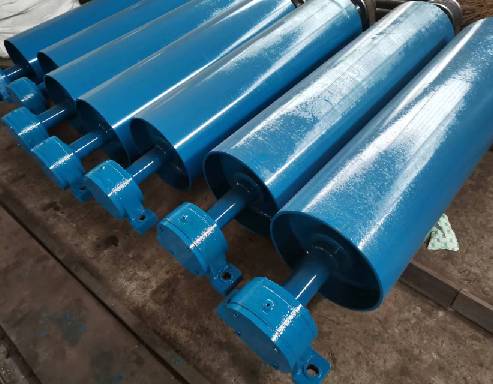 Afrikaans
Afrikaans  Albanian
Albanian  Amharic
Amharic  Arabic
Arabic  Armenian
Armenian  Azerbaijani
Azerbaijani  Basque
Basque  Belarusian
Belarusian  Bengali
Bengali  Bosnian
Bosnian  Bulgarian
Bulgarian  Catalan
Catalan  Cebuano
Cebuano  Corsican
Corsican  Croatian
Croatian  Czech
Czech  Danish
Danish  Dutch
Dutch  English
English  Esperanto
Esperanto  Estonian
Estonian  Finnish
Finnish  French
French  Frisian
Frisian  Galician
Galician  Georgian
Georgian  German
German  Greek
Greek  Gujarati
Gujarati  Haitian Creole
Haitian Creole  hausa
hausa  hawaiian
hawaiian  Hebrew
Hebrew  Hindi
Hindi  Miao
Miao  Hungarian
Hungarian  Icelandic
Icelandic  igbo
igbo  Indonesian
Indonesian  irish
irish  Italian
Italian  Japanese
Japanese  Javanese
Javanese  Kannada
Kannada  kazakh
kazakh  Khmer
Khmer  Rwandese
Rwandese  Korean
Korean  Kurdish
Kurdish  Kyrgyz
Kyrgyz  Lao
Lao  Latin
Latin  Latvian
Latvian  Lithuanian
Lithuanian  Luxembourgish
Luxembourgish  Macedonian
Macedonian  Malgashi
Malgashi  Malay
Malay  Malayalam
Malayalam  Maltese
Maltese  Maori
Maori  Marathi
Marathi  Mongolian
Mongolian  Myanmar
Myanmar  Nepali
Nepali  Norwegian
Norwegian  Norwegian
Norwegian  Occitan
Occitan  Pashto
Pashto  Persian
Persian  Polish
Polish  Portuguese
Portuguese  Punjabi
Punjabi  Romanian
Romanian  Russian
Russian  Samoan
Samoan  Scottish Gaelic
Scottish Gaelic  Serbian
Serbian  Sesotho
Sesotho  Shona
Shona  Sindhi
Sindhi  Sinhala
Sinhala  Slovak
Slovak  Slovenian
Slovenian  Somali
Somali  Spanish
Spanish  Sundanese
Sundanese  Swahili
Swahili  Swedish
Swedish  Tagalog
Tagalog  Tajik
Tajik  Tamil
Tamil  Tatar
Tatar  Telugu
Telugu  Thai
Thai  Turkish
Turkish  Turkmen
Turkmen  Ukrainian
Ukrainian  Urdu
Urdu  Uighur
Uighur  Uzbek
Uzbek  Vietnamese
Vietnamese  Welsh
Welsh  Bantu
Bantu  Yiddish
Yiddish  Yoruba
Yoruba  Zulu
Zulu Understanding the Functions of Drive and Driven Pulleys in Mechanical Systems for Efficient Motion
Understanding Drive Pulley and Driven Pulley Key Components in Mechanical Systems
In the realm of mechanical engineering, understanding the components that facilitate motion is essential for designing efficient machines. Among these components, the drive pulley and driven pulley play a crucial role in creating and transferring power within a system. This article explores the characteristics, functions, and importance of these pulleys in various applications.
A drive pulley, also known as a driving pulley, is the primary component in a belt drive system that transmits power from a motor or other power source. It is typically connected to the driving mechanism—such as an electric motor—through a shaft. When the motor operates, it rotates the drive pulley at a specific speed, causing the attached belt to move. The design of the drive pulley, including its diameter and groove design, affects the overall efficiency and speed of the system. Larger pulleys can provide more torque but may reduce speed, while smaller pulleys allow for higher speeds but may not generate sufficient torque for heavier loads.
On the other hand, the driven pulley, often referred to as the follower pulley, receives the motion transmitted through the belt from the drive pulley. Positioned at the end of the belt drive, the driven pulley converts the rotational motion from the belt into mechanical energy, which can then be used to power various components, such as conveyor belts, fans, or other machinery. The driven pulley’s characteristics, including its size and weight, also determine its performance and the load it can handle. By adjusting the size of the driven pulley in relation to the drive pulley, engineers can achieve different gear ratios, allowing for customization of speed and torque to suit specific applications.
In practice, drive and driven pulleys work in tandem to accomplish a variety of tasks across multiple industries. For instance, in manufacturing, belt-driven systems are commonly used to transport materials along production lines. The drive pulley is connected to a motor that powers the conveyor system, while the driven pulley facilitates the movement of goods by linking the belt to the conveyor. This efficient transfer of energy ensures smooth operation and minimizes downtime.
drive pulley and driven pulley

Another vital application of drive and driven pulleys can be found in automotive engineering. In vehicles, pulleys are used in various systems, such as timing belts and accessory drives. The engine serves as the drive pulley, providing power to the driven pulleys that operate components like the alternator, water pump, and air conditioning compressor. This network of pulleys not only enhances the vehicle's performance but also improves fuel efficiency and reduces emissions.
In addition to their mechanical benefits, the use of drive and driven pulleys also contributes to the overall safety and reliability of equipment. Properly designed and maintained pulley systems can prevent slips, misalignments, and belt wear, which are common issues in mechanical setups. Regular inspections and maintenance practices—such as checking belt tension and alignment—are crucial for ensuring the longevity and efficiency of these systems.
As technology advances, the design and materials used in pulleys have evolved, leading to increased performance and reduced weight. Modern pulleys may utilize synthetic materials or advanced composites to enhance durability and minimize energy loss. This innovation reflects the ongoing pursuit of efficiency in mechanical systems.
In conclusion, the drive pulley and driven pulley are fundamental components in many mechanical systems. Their ability to convert and transmit energy effectively makes them indispensable in diverse applications, from industrial machinery to automotive engineering. Understanding their functionality and importance allows engineers and designers to create more efficient systems that meet the demands of modern technology and industry.
-
Revolutionizing Conveyor Reliability with Advanced Rubber Lagging PulleysNewsJul.22,2025
-
Powering Precision and Durability with Expert Manufacturers of Conveyor ComponentsNewsJul.22,2025
-
Optimizing Conveyor Systems with Advanced Conveyor AccessoriesNewsJul.22,2025
-
Maximize Conveyor Efficiency with Quality Conveyor Idler PulleysNewsJul.22,2025
-
Future-Proof Your Conveyor System with High-Performance Polyurethane RollerNewsJul.22,2025
-
Driving Efficiency Forward with Quality Idlers and RollersNewsJul.22,2025





























